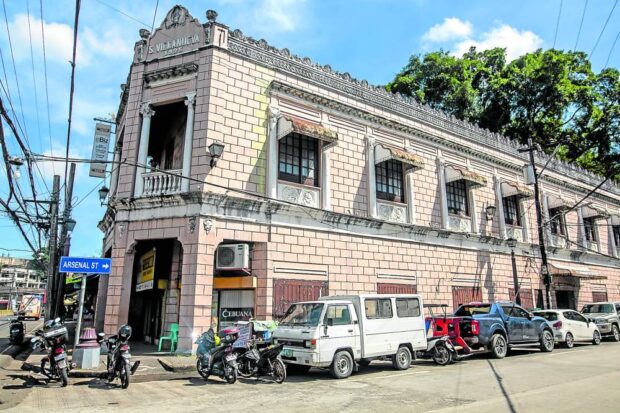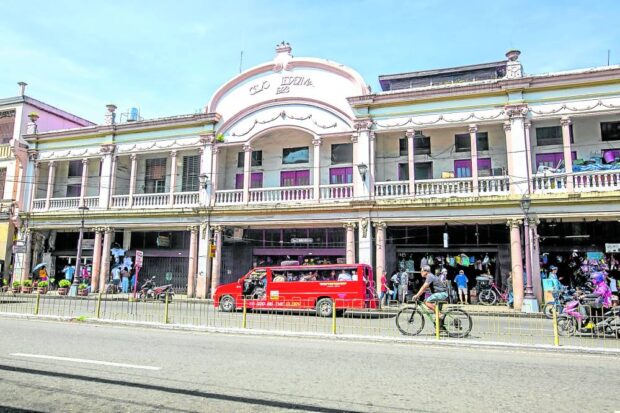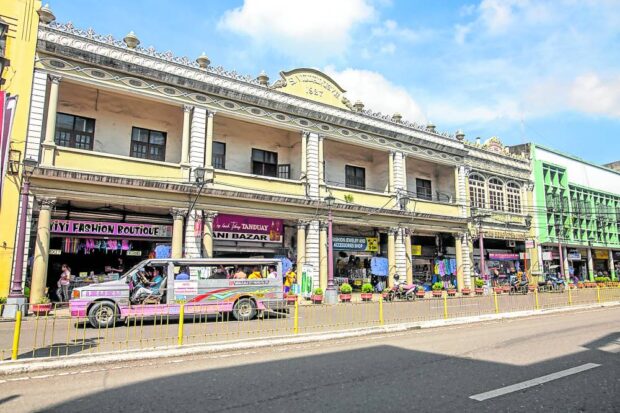Strong Chinese community ‘backbone’ of Iloilo’s economy
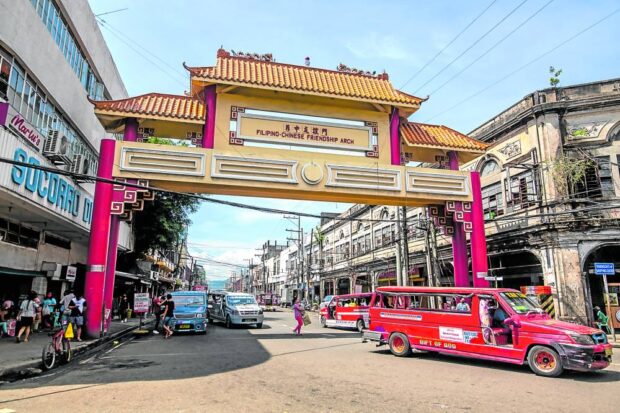
FIRM FRIENDS The Filipino-Chinese Friendship Arch on Iznart Street has been a landmark in Iloilo City’s local Chinatown. It was erected in 2012. —IAN PAUL CORDERO
Like clockwork, Iloilo’s main streets at the old commercial business district are transformed into a sea of red and yellow buntings and lanterns during Chinese New Year celebrations.
The streets are closed to vehicular traffic and classes are suspended. The historic and iconic streets of Iznart and J.M. Basa are lined with food stalls and kiosks.
Students wear dragon and other costumes in a festive and grand parade led by the city’s top civic and government leaders and joined in by thousands of spectators. Among the highlights are the dragon dances, Chinese lantern parade and fireworks display.
The Chinese New Year celebrations in Iloilo are considered the biggest held outside of Metro Manila.
“The Filipino-Chinese community is deeply rooted in Iloilo and is tightly linked to other sectors,” said Terence Uygongco, chair of the Iloilo Economic Development Foundation Inc. and president of the Filipino-Chinese Chamber of Commerce of Iloilo Inc.
In the downtown area, along Calle Real, small family-owned shops and restaurants operated by generations of Chinese-Filipino entrepreneurs have survived the entry of giant and modern shopping malls.
Retail stores like Seven-Seven Trading and restaurants like KongKee, Roberto’s and Dainty are not only iconic establishments but a showcase of Ilonggo heritage.
Strategic location
Younger members of the Chinese-Filipino community have also expanded and diversified from retail trade to hotels, restaurants and other industries operating businesses through Western Visayas region and in other parts of the country.
“Iloilo is a strategic location to do business as a center of trade and with its proximity to other provinces on Panay Island and Bacolod City (Negros Occidental on neighboring Negros Island). When our families became established here, there was no reason to go elsewhere,” Uygongo said.
Iloilo City is the regional economic, political and educational center of Western Visayas. The region is composed of the provinces of Antique, Aklan, Capiz, Guimaras, Iloilo and Negros Occidental.
While there is no official estimate on the number of Chinese-Filipino community members, Uygongo said they have about 14,000 members, many already belonging to the third generation after those who came to Iloilo in the 1940s.
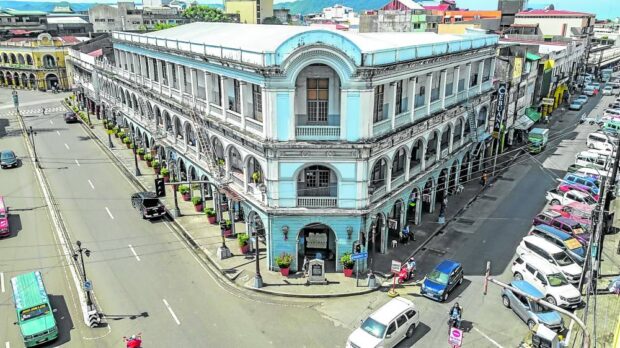
TOP RESTORATION The Eusebio Villanueva Building used to be known as the International Hotel that catered to foreign patrons in the 1920s. It was restored in 2012. —PHOTOS BY IAN PAUL CORDERO
Former Iloilo vice governor and historian Demy Sonza said the roots of the Filipino-Chinese community in Iloilo dates back to even before the Spanish colonization.
“In the early period, probably from the 10th to the 12th century, the Chinese traded from the decks of their vessels, or in safer places, from some recognized trading stations along the shore. However, after the 12th century, some Chinese merchants began to settle at the chief ports of the Philippines to handle the trading activities. One of those early Chinese settlements was located in Iloilo,” Sonza wrote in “The Chinese in Iloilo: 1581-1900” published in the Southeast Asia Journal in 1984.
He cited the recovery of large quantities of Sung, Yuan and Ming porcelain wares in several archaeological sites in Iloilo which, he said, “attest to the big volume of trade that the Chinese had with the province in those early days.”
Coming to stay
Sonza said the Chinese “did not only come to trade. Many of them came to stay. By the time the Spaniards arrived in Iloilo in the 16th century, the Chinese colony was quite large.”
The population of the Chinese in Iloilo was large enough that the Spanish colonial government established a Chinese quarter, Parian, in what is now Molo District.
The Chinese were also credited for making Iloilo the textile center of the country.
According to Randy Madrid, historian at the University of the Philippines-Visayas (UPV),
the Chinese were active at that time in the exportation of local weaves and importation of foreign textiles, making Iloilo the “Textile Capital of the Philippines” by the mid-19th century.
He said they also started brick salt making and sugar production (especially the Pison family). “The Locsin family of Molo is also credited to have started the famous noodle soup called ‘Pancit Molo,’” he added.
The boom of the textile industry ushered the formation of the first urban concentration that served as the foundation of Iloilo’s urbanization, said Madrid in a recent interview.
“The Chinese and Chinese-Filipino capital became the backbone of the urban economy,” he said.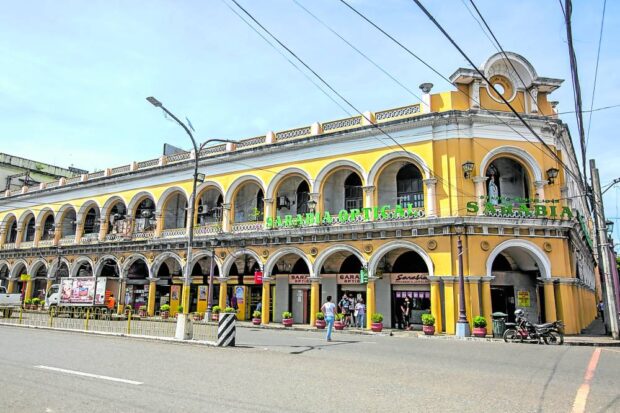
“Chinese mestizos eventually became the tour de force in the development of the sugar industry. The first urban bourgeoisie in Iloilo were mestizos of Chinese descent,” he added.
Now, Madrid said many of these Chinese and Chinese-Filipinos are wholesalers and retailers of commercial goods and merchandise and highly concentrated in the downtown Central Business District –Aldeguer, Iznart, and J.M. Basa Streets.
Battling prejudice
Sonza, in his article, said that the assimilation of the Chinese families while preserving their cultural roots was not easy.
“The Chinese first came to Iloilo centuries ago. Some just came to trade but over the years, a large number had settled down, weathering initial prejudice, and at times open hostilities from the Ilonggos, as well as official persecution from the government,” said Sonza in his article.
He said that after two or three generations and after inter-marriages, the members of the community “no longer considered themselves as Chinese but as Ilonggos, and were fully accepted as such.”
“They were no longer called the derogatory ‘Insik’,” Sonza said.
According to Madrid, the situation in Iloilo was so much different from what happened in Manila where walls were built around Intramuros so that the Chinese couldn’t enter the Spanish quarters.
In Molo, he said Spaniards, locals, and the Chinese interacted freely.
Sonza said the early Chinese who came to Iloilo “contributed immensely to Ilonggo life and culture” with “many of their descendants became leaders in the various fields of human endeavor.”
Uygongo said their deep roots and strong ties among all Ilonggos, especially in recent years, was due to the receptiveness of the local government and cooperation among various sectors to help in the development of the city.
“We are dedicated to helping develop the city and its goals,” he said.
According to Madrid, the lasting legacy of Chinese and Chinese-Filipino in Ilonggo culture is the surviving textile industry.
“And until today, Chinese and Chinese-Filipinos are very active in Iloilo’s urban economy,” he added.

